It is difficult to believe, but the Decembrist is a kind of cacti, the birthplace of which are hot tropics. The Decembrist received his name due to blossom terms. Bright colors can be admired from November to December. The plant can also be called Siegocactus or Skluberger. You can also meet the names of the "Christmas Cactus", "Easter Cactus". At home, the Decembrists, like plants epiphytes, are not growing on Earth, but on the branches or trunks of trees. They are not parasites, and high trees they need just in order to obtain a sufficient amount of sunlight. From this article, you will learn everything about the Decembrist, the care of it, the methods of reproduction, learn when the Decembrist blooms.
Decembrist Plant - Botanical Description
- Homeland Decembrists are wet forests of Brazil and South America. In our climatic zone, the Decembrists were brought in 1816.
- Just like orchids, some species of ferns, cacti, Decembrists are plants epiphytes.
- In the wild, the Decembrist grows on the branches and on the air roots of trees. First, the trees will be treated with mosses or ferns, forming the substrate when the Decembrists grow later and grow. Consequently, in the soil these plants may not need. The root system of the Decembrists is developed weakly, but the air roots are well developed. With their help, the plant catches moisture from the air.
- The Decembrist can grow up to 40 cm in height.
- Stems of the Decembrist disrupting, consisting of leaves, which are as if connected into the chain.
- The period of flowering in the Decembrists may occur from October to December.
- The flowers of the Decembrist are elongated, resembling a tube or bell with stamens. In the wild, the color of the colors of the Decembrist is white or red. But modern hybrid varieties can also meet a purple coloring or pink, yellow, pink color.
- In moderate latitudes, grow the Decembrist in the open ground is not possible, since the growth and development of this plant occurs only in conditions that are close to tropical.
- Plants that are prone to vertical growth are planted in ordinary flower pots. Also there are ampel forms of the Decembrists that can be grown in the suspended pots.
Under favorable growth conditions, the Decembrist will delight you with annual bright flowering for 15-20 years. Every year an increasing number of hybrid forms of the Decembrist appear, which surprise unusually diverse shades and shapes.
Decembrist - Photo
How to grow a Decembrist
Choose a place for the Decembrist
The cultivation of the Decembrist will not take you special hassle. Even a novice gardener will be able to grow this tropical plant. What place in the house will be perfect for the Decembrist?
- Choose a southern or eastern window for the Decembrist, with a sufficient solar light.
- Despite the fact that the Decembrist needs solar rays, the straight rays can negatively affect the appearance of the plant. It is advisable to priest solar window sills with curtains or higher plants.
- The Decembrist prefers to grow in conditions that are as close as possible to climatic wet tropics. It is desirable not to put this plant near the heating devices, the central heating batteries that will only dry the air.
- The ideal temperature for the Decembrist, in which the plant will grow and bloom especially well, is the temperature from +20 to +25 degrees Celsius. But the plant is also known for its endurance, it can grow at temperatures from +2 to +38 degrees Celsius.
- During the rest period for the Decembrist, it is necessary to provide ambient temperature from +13 to +15 degrees Celsius.
Cooking nutritious soil for the Decembrist
In order to create for the Decembrist, the most comfortable conditions for the Decembrist, you need to prepare a nourishing earth mixture:
- 1 part of the garden land or soil from the greenhouse;
- 1 part of the compost;
- 1 part of the finished nutritional soil for flowering plants;
- 1 part of the coconut substrate.
Mix all the components well. For greater nutritional land for the Decembrist, you can add the following additional components that are taken from the calculation by 1 kg:
- ready soil Bio Vita - 1 tbsp;
- biohumus - 1 tbsp;
- moss sphagnum crumpled - 2 tbsp;
- fir and pine bark crushed - 2 tbsp;
- vermikulitis - 2 tbsp;
- perlite - 1 tsp.
All parts are mixed one more time to saturate the ground with soil. You can also pour it with any liquid complex microbiological fertilizer. Experienced gardeners advise the preparation of such nutrient soil about 7 days before the landing of the Decembrist. During this time, the ground can lie under a polyethylene film, but in such a way that air flows.
How to care for the Decembrist
All activities for the care of the Decembrist depend on the period that the plant undergoes at the moment. Flowers highlight 5 conditional periods in the growth and development of the Decembrist:
- from mid-March to October The plant is located in the period of vegetation. At this time, the plant grows as quickly as a rapid pace. The Decembrist at this time can be taken to the balcony, on an open air, where it must be in a half;
- in October The plant passes through the first period of rest. At this time, the plant should gain strength before flowering. Ideal temperature conditions for the autumn rest period - 10-15 degrees. If there are no strong frosts on the street, the Decembrist can not be transferred to the apartment during this period. Futive floral kidneys will be useful to be useful. During the resting period, watering and feeding are also reduced;
- from November to January The Decembrist enters the flowering period. If the plant before it was in the greenhouse, on the balcony or in the courtyard, then it must be transferred to the apartment. Temperature conditions should be about 21-25 degrees. Watering and feeding for the growing season also increase;
- from January to mid-March The Decembrist is in the second period of rest. After a period of active flowering, the plant needs a vacation. The upper segments of shoots are pinching to stimulate the formation of new shoots.
How to water the Decembrist
Decembrists, like most flowering plants require regular irrigation, the volume of which depends on the time of year.
- In the summer months, the Decembrist watered 1 time in 4 days. The frequency can be increased or decreasing depending on what humidity in the apartment.
- In the fall, watering the Decembrist is slightly reduced to 1 times 1 week.
- As soon as the plants begin to get toned buds, watering again produce on the "summer" scheme.
- After the end of flowering, the Decembrist will have enough watering 1 time in 14 days.
- If you water the Decembrist with water from under the tap, then the soil will gradually become more alkalic. To maintain a comfortable for the Decembrist, the level of soil acidity for the Decembrist, 1 time per month should be added to water for watering lemon juice from calculating 1/2 lemon per 10 liters of water.
Watering the plant follows water temperature. Make sure that the earthen kom was not overwhelmed and did not overlook. The Decembrist, as a real decorative plant from the tropics, simply adores spraying with water from the spray. Flower pots can be put on pallets filled with damp pebbles, which will additionally maintain comfortable humidity.
Than to feed the Decembrist
Like most decorative flowering plants, the Decembrist is positively related to feeding. The main volume of fertilizers is brought during the growing season when the plant has a maximum growth rate and development. Thus, you can start feeding the Decembrist since March. Some flowerflowers make liquid complex fertilizers every month, further reducing the dosage twice. Other fans of growing tropical Decembrist advise fertilizer weekly throughout the entire growing season. You can use additives for orchids as fertilizers. On the store shelves you can find such fertilizers like:
- Etisso;
- Ideal;
- Baikal;
- Extraxol;
- Ribav Extra;
- Energy and others.
1-2 months before the end of the growing season, all feeding stops.
How to transplant Decembrist
The Decembrist needs a transplant approximately 1 time in 3-4 years. Also, the flower needs to transplant and immediately after purchase. The pot needs to be taken in diameter 2 cm more than the previous one.
- If the Decembrist was purchased in a flower shop, then experienced flowers advise well to rinse his leaves before transplant. It is necessary to do it even when the plant blooms.
- Pot take more than the previous one. At the bottom of the pot must be large holes, as the Decembrist does not tolerate moisture in the roots.
- At the bottom of the pot surely lay a good drainage layer, for example, from clay.
- On the drainage layer, the flower was advised to lay a layer of Sfagnum moss. Moss will not give the soil to fall into the space between pebbles on the lower layer, and will also absorb the excess moisture during watering.
- Take the Decembrist is advised immediately after the end of the flowering period.
- Prepare the nourishing earth ground in the prescription, which is described above in the article.
- To make the plant easily leaving the extraction of a pot, slightly pour it before transplanting.
- Remove the Decembrist from the old pot and together with an earthen room carefully pass it into a new pot.
- Fill the pot to the top nutritious soil and slightly construct it.
- Pour the transplanted Decembrist solution of energy in the calculation of 13 drops per 1 st water.
- In order for the plant successfully "acclimatized" in a new pot, put the plant for 1 week in a half-way place.
- Since the prepared soil is very nutritious and rich, then it is not worth feeding the Decembrist during the first year after a transplant.
The main condition for the proper transfers of the Decembrist is the presence of a good drainage layer, which should fill in 1/3 of the pot. If you do not want to mess with mixing various components to produce nutritional soil, you can and purchase ready-made soil in the store. For these purposes, the soil is perfect for cacti, orchids. Soil must be weakly acid. But how to plant the Decembrist? The planting process is completely similar to the transplant process.
Debris reproduction
How to reproduce the Decembrist? The reproduction occurs in a very simple and fast mixture.
- In the spring-autumn period you can prepare cuttings. To do this, unscrew the 2-3 left leaves with your hands.
- The resulting cuttings must be "dried" in air for 6-7 days.
- Fill in a small container with a nutrient soil, pour it and strengthen the stalks in it.
- For successful cutting of the cutlery, he needs to create greenhouse conditions. To do this, you can simply cover the tank with a stalk or a glass.
- A mini-greenhouse with a cutlets must be put in a shady seat and provide it with a temperature of 15-20 degrees.
- Daily ventilate the cuttings, remove the condensate from the inner surface of the jar, follow the moisture content of the earth coma.
- When the cutlets are rooted and goes into growth, the plant can be transplanted in a pot of larger diameter.
- You can roighten the cuttings of the Decembrist not only in the soil, but also in the hydrogel. Hydrogel's swollen balls are placed in a small container, which is then put on the Decembrist stalk. As required, the cuttings will "take" from the hydrogel balls as much moisture as necessary.
If you have created the most comfortable conditions for the cutting, then the rooting will occur quickly. The Decembrist reproduce is also very convenient after the pruning procedure, after which there are many finished cuttings.
Decembrist diseases and his pests
The Decembrist may be affected by pests or various diseases quite rarely. This is due to the content of the flower in the wrong conditions, with incorrect irrigation mode, making feeding, as well as with incorrect temperature mode and illumination mode. Among pest insects can be listed:
- web tick;
- bellenka;
- shield;
- mealybug.
In the struggle of pests in the initial stage of infection, folk methods are quite effective. For example, plants wash with soap solution, vodka, etc. If the pests "captured" too much of the plant, you will have to contact modern insecticidal drugs that can be easily purchased in the store. Among the diseases of the Decembrist can be listed:
- fusariosis;
- phytofluorosis and other diseases.
Problems in the cultivation of the Decembrist
Decembrist does not bloom - what to do
Why not blooms the Decembrist? Such a problem is quite frequent when growing this decorative tropical plant at home. Consider the reasons for such "behavior" of the flower:
- the Decembrist did not provide the appropriate conditions that are necessary for the rest period;
- watering was not reduced during the rest period;
- nOT stopped feeding during the rest period.
Consequently, the most important rule that ensures the lush flowering of the Decembrist is the right organization of the rest period for the plant. This period comes in October and lasts a whole month. At this time, watering is reduced to a minimum, any feeding stops, and the ambient temperature should be reduced to 11-17 degrees Celsius. It is at such a temperature that the budding of buds can occur. Experienced flowers are recommended for stimulation of bootonization to discharge the tops of the shoots, in which buds were formed last year. In early November, the plant needs to "bring out" from the rest period. It is transferred to a well-lit side concern with an air temperature in the room above 18 degrees. Increase by watering the Decembrist and do not forget to turn the pot around your axis every day so that all parts of the plant receive a sufficient amount of light. Do not transfer the flower to another place when the buds started to form, as the Decembrist can reset them.
Decembrist swept - what to do
The causes of the fading of the Decembrist are the following:
- the plant fell ill with phythium or phytoofluoro. What to do: urgently treat all parts of plants with special means;
- the plant was watered too cold water. What to do: Water the Decembrist only water room temperature;
- too much fertilizer was made. What to do: Too much concentration of fertilizers in the ground can "burn" roots. Sometimes the plant is no longer possible to help in such cases. But you can try to urgently transplant the Decembrist to a new pot with a new soil;
- the plant was long under direct sunlight. What to do: provide a plant scattered sunlight.
Fall leaves of the Decembrist - what to do
Fitting leaves in decorative plants is always an unpleasant phenomenon. The Decembrist may also happen to happen for a variety of reasons:
- acembrist infection by web tick. What to do: save a plant from the pest with the help of folk methods or with the help of modern insecticidal preparations;
- insufficient air humidity. What to do: In hot weather, hold regular spraying of the Decembrist, put the pot on the pallet with wet pebbles;
- finding a Decembrist on a strong draft. What to do: watch the pot with the Decembrist be protected from the wind;
- lack of nutrients in the soil. What to do: make feeding, carefully cook the soil for planting to ensure the plant with the necessary useful elements.
The Decembrist - a flower, which one of the few can delight with bright flowering when winter frosts raise outside the window. Under all the rules of landing and care for this plant, there will be no problems with the cultivation of the Decembrist.

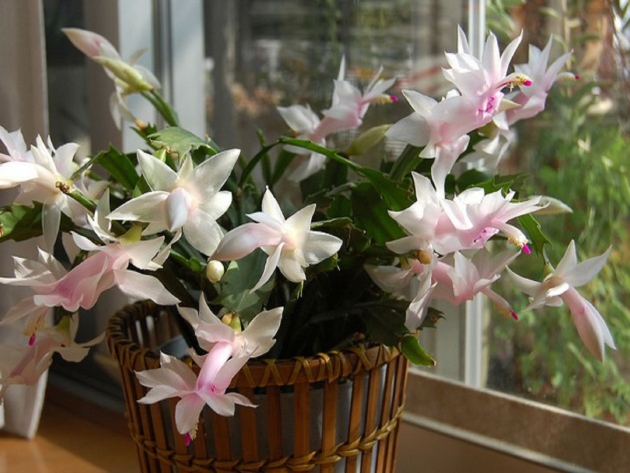
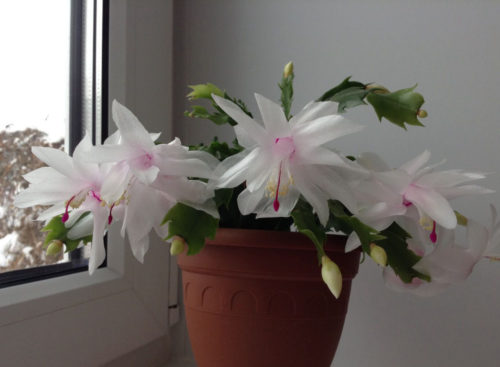
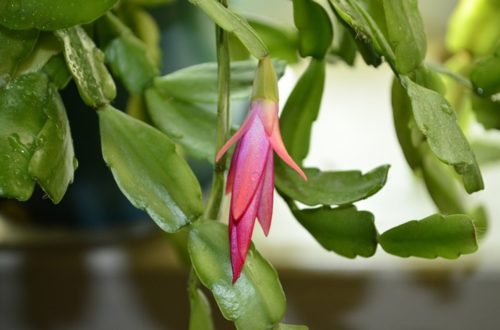
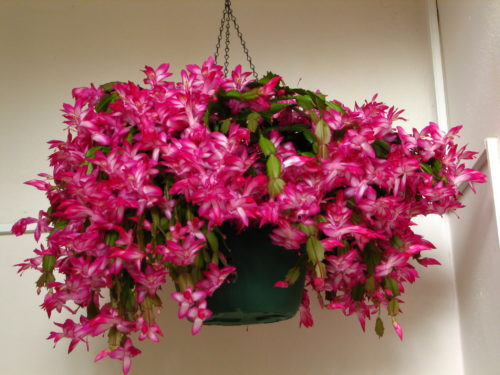
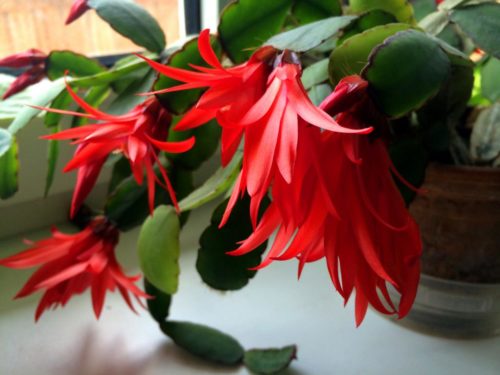

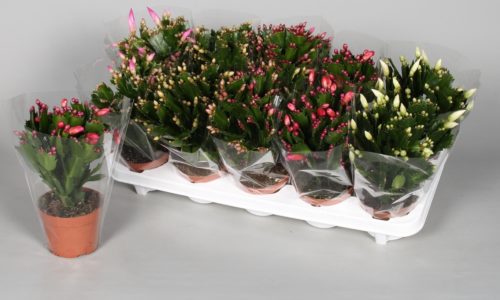
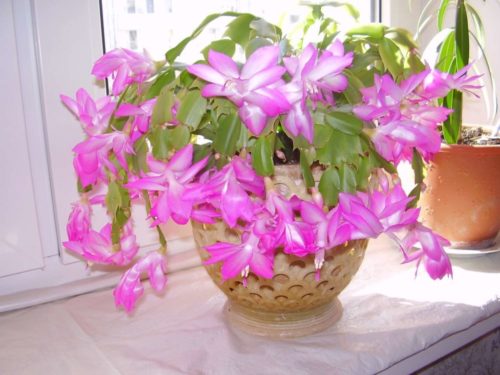
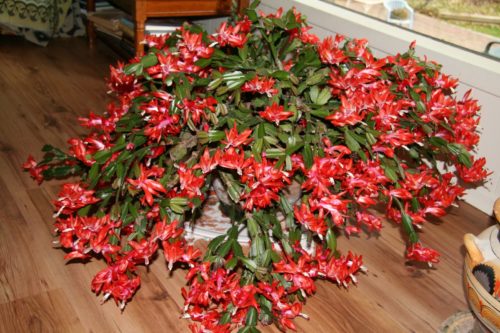












 Start a discussion ...
Start a discussion ...